Quad ESL 2805
| Quad ESL 2805 |
| Tried and True/New and Improved |
|
|
|
July 2011 |
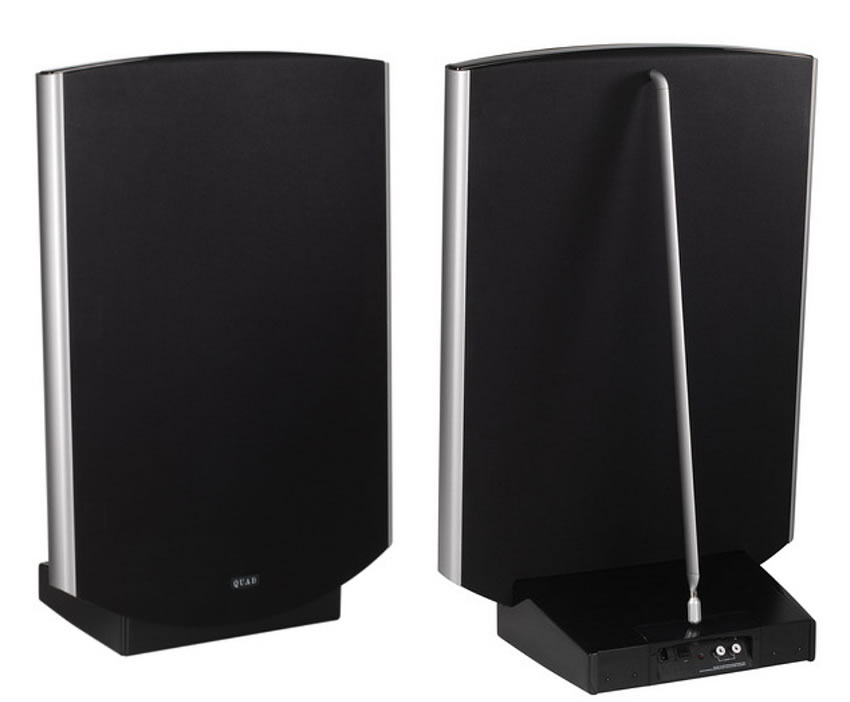
With all the new technology and manufacturing techniques, it seems strange to be reviewing a speaker that has its roots in the 1940’s. Or maybe it is not strange at all. Unlike many newer companies Quad has a rich heritage of good products and a core philosophy. Over the decades Quad management has recognized and stayed true to those strengths, moving only in small increments if those increments were improvements. That seems to be a common trait among the longest-lived and most venerable audio manufacturers.
It appears to be de rigueur to start any Quad review with a long-winded recital of the company’s storied history. Well I always hated history in high school and college. There is just too much of it. I am more of a “what have you done for me lately” kind of guy. History lesson finished—moving on. Let me clear the air right now. I have no desire to do battle with fans of older generation Quads. The reasons for their fervent admiration are understood. But, as I just said, I am more of a “now” person. I like new and shiny, latest and (hopefully) greatest, with a warranty. If you would like the company’s full history, buy a pair of ESL speakers. Included with each pair is a copy of Ken Kessler’s 215 page tome “Quad: The Closest Approach”.
So it is not surprising that the latest model in the evolutionary chain caught my ear at CES in January 2010. I definitely wanted to spend more time with the ESL-2805 speakers. The ESL-2805 is the smaller of the two current models. It employs four panels with the inner two panels utilizing concentric anode rings for point source imaging. The outer rings are linear in their response. There is no crossover in the Quad ESL speakers which further enhances their cohesiveness. The larger model (ESL-2905) has two additional bass panels.
While arranging for a review I was also offered the use of a Quad 99 CDP-2 ($1600) and the 25Wpc Quad II Classic Integrated Amplifier ($6500). Those were the same models I heard at CES and subsequently used at RMAF 2010.
Fashion Show
Away from the hectic pace of CES I was able to become more intimate with the Quad equipment as I unpacked it in my home. I was immediately impressed by the compact size and styling of the CDP and integrated amplifier. The attractive champagne finish is classy, or should I say classic? It looks more like art than electronics. This is equipment that is designed to be displayed proudly but not dominate a room or take up any more space than necessary. Many other manufacturers could take lessons from Quad with respect to form, function, and just plain common sense in the average listening room.
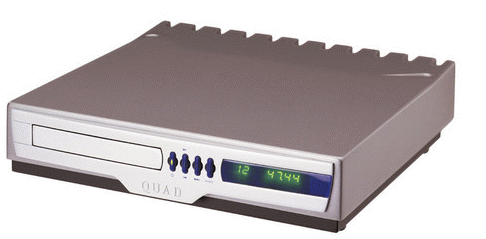
The Quad 99 CDP-2 is a compact and stylish piece optimized for CD-playback but with some additional features that greatly enhance its flexibility. I compared it to my Nova Physics Memory Player and was very impressed by the CDP-2’s performance. Music from the CDP-2 had slightly less detail than the Memory Player and was denser in the midrange. This was especially noticeable on vocals and pianos. Pianos via the CDP-2 sounded like they were played with a heavier hand. The CDP-2 also exhibited more upper-end digital glare. But that is not unusual. The Memory Player is a real detail monster and the most analog-sounding player I have experienced. Its neutrality tends to sound “lean” against many players I have compared it to. At less than 1/10th the cost of the Memory Player, the CDP-2 acquitted itself very well.
But that is not the whole story. The CDP-2 can perform extra duties with its 24bit, 192kHz D/A converter. It has six digital inputs – three coaxial (RCA) and three optical (Toslink). Outputs include a Toslink digital output and two pairs of analog (RCA) outputs. One pair of analog outputs is fixed level and the other is variable (potentiometer controlled in the analog domain). Two QuadLink connectors, a power switch, and a two-prong (no ground) IEC also occupy the rear panel of the CDP-2.
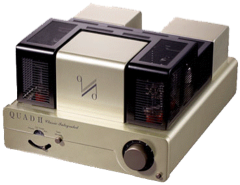 The Quad II Classic is a 25Wpc compact and attractive integrated amplifier. It has three line level inputs as well as a tape monitor loop and phonograph input with a switch to select between moving coil and moving magnet input. All connections are single-ended RCA.
The Quad II Classic is a 25Wpc compact and attractive integrated amplifier. It has three line level inputs as well as a tape monitor loop and phonograph input with a switch to select between moving coil and moving magnet input. All connections are single-ended RCA.
Unpacking the ESL-2805s is a challenge best met by four strong hands. Once freed from their sturdy packing I was again impressed by the Quad standard for fit and finish. My review pair was done in the attractive “Classic” finish. The Quad website pictures definitely do not do them justice.
Set Up
I normally use power conditioning and upgrade power cords with all of my electronic equipment so it pained me greatly to plug the ESL-2805s directly into the wall via the generously long (ungrounded) stock power cords. I did manage to connect one speaker to my dedicated 20-amp audio circuit. When finally positioned, the speakers were much closer together than where I started. In a fit of serendipity, I realized I had two power cords (LessLoss DFPC Signature) that were long enough to connect the speakers to my Shunyata V-Ray. This combination proved a significant improvement over stock power cords directly into the wall. Every aspect of performance was enhanced. Of all the improvements I think PRAT was my favorite. The music seemed to flow more effortlessly from a blacker background. Dynamics were improved and at the same time the music was more relaxed if you can accept the apparent inconsistency.
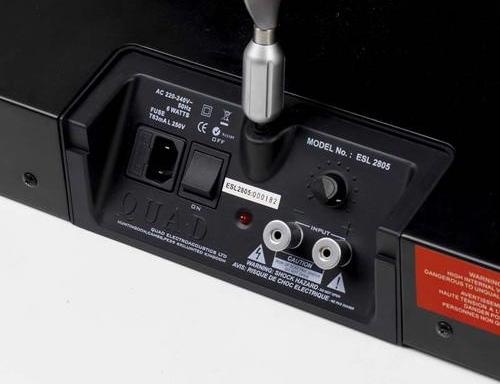
The improvement using the LessLoss power cords encouraged me to do something I had been deliberating over for a long time. I acquired four JPS Labs Aluminata power cords to try on the Quads and other equipment. Again, there were significant and all positive improvements. And again, except for better bass definition and perhaps a little more bass weight, there was no change in the tonality of the Quads. An improved power source allowed the Quads to do what they do even better but without any significant change in character.
The Quads respond well to better power and I encourage any owner to experiment. Of the two power cords I was able to try, the JPS Labs Aluminata was my preference but at one-third of the price of an Aluminata, the LessLoss DFPC Signature is still worthy of consideration.
The ESL speakers come with threaded flat feet and threaded heavy-duty cones. Thick brass locking rings are also supplied so the speakers can be adjusted for level/height and then securely locked in place. Unfortunately the cones were more appropriate for use on bare floors with floor disks (not provided) underneath. The cones were too large in diameter to pierce carpet and padding. My experience with cones that don’t penetrate to the sub-floor is they are of no value in that application. Because my floors are carpeted I used the flat feet. Both the feet and cones have a shiny gold-colored, jewelry finish that would look attractive in exposed applications.
I purchased different brass spikes that would penetrate my carpet and padding and anchor to my concrete floors. There was a slight improvement in bass and midbass definition but not nearly the amount I have experienced making the same change with dynamic driver speakers. The Quad-supplied flat feet had proven to be quite adequate on carpet. The spikes I added did raise the speaker bases 1.5” above the carpet thus providing a wildlife habitat for spiders and centipedes.
The final speaker position ended up with the speaker faces about 45” from the front wall and 48” between them. There was approximately 3” of toe in (measured from the front wall).
![]()
Don’t forget to bookmark us! (CTRL-SHFT-D)
Stereo Times Masthead
Publisher/Founder
Clement Perry
Editor
Dave Thomas
Senior Editors
Frank Alles, Mike Girardi, Russell Lichter, Terry London, Moreno Mitchell, Paul Szabady, Bill Wells, Mike Wright, and Stephen Yan,
Current Contributors
David Abramson, Tim Barrall, Dave Allison, Ron Cook, Lewis Dardick, John Hoffman, Dan Secula, Don Shaulis, Greg Simmons, Eric Teh, Greg Voth, Richard Willie, Ed Van Winkle, Rob Dockery, Richard Doron, and Daveed Turek
Site Management Clement Perry
Ad Designer: Martin Perry



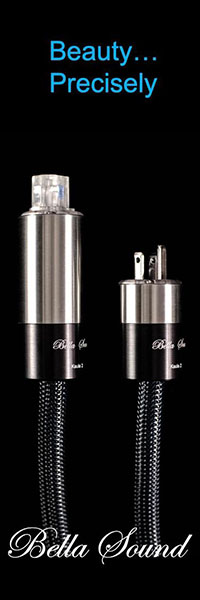


Be the first to comment on: Quad ESL 2805